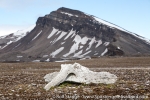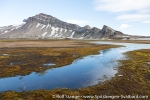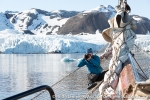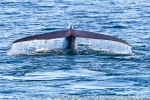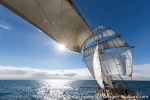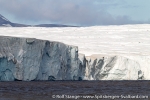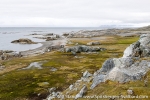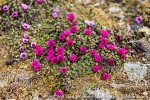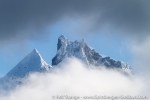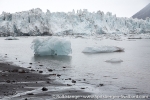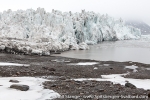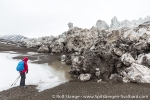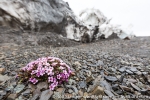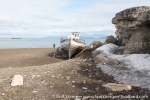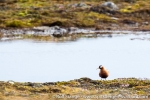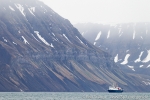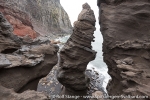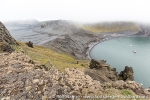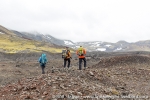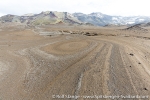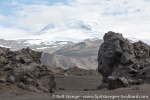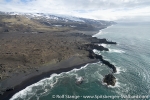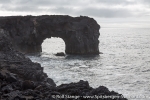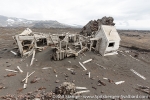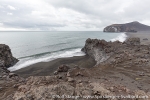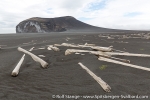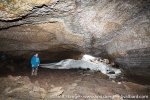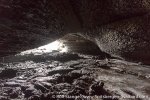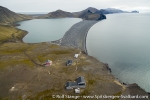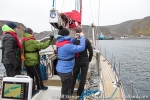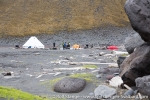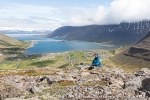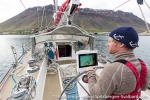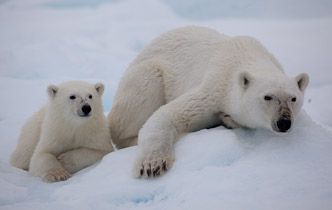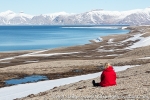-
current
recommendations- Liefdefjord
New page dedicated to one of Spitsbergen's most beautiful fjords. Background information and many photos.
- New Spitsbergen guidebook
The new edition of my Spitsbergen guidebook is out and available now!
- Liefdefjord
New page dedicated to one of Spitsbergen's most beautiful fjords. Background information and many photos.
Page Structure
-
Spitsbergen-News
- Select Month
- June 2025
- May 2025
- April 2025
- March 2025
- February 2025
- January 2025
- December 2024
- November 2024
- October 2024
- September 2024
- August 2024
- July 2024
- June 2024
- May 2024
- April 2024
- March 2024
- February 2024
- January 2024
- December 2023
- November 2023
- October 2023
- September 2023
- August 2023
- July 2023
- June 2023
- May 2023
- April 2023
- March 2023
- February 2023
- January 2023
- December 2022
- November 2022
- October 2022
- September 2022
- August 2022
- July 2022
- June 2022
- May 2022
- April 2022
- March 2022
- February 2022
- January 2022
- December 2021
- November 2021
- October 2021
- September 2021
- August 2021
- July 2021
- June 2021
- May 2021
- April 2021
- March 2021
- February 2021
- January 2021
- December 2020
- November 2020
- October 2020
- September 2020
- August 2020
- July 2020
- June 2020
- May 2020
- April 2020
- March 2020
- February 2020
- January 2020
- December 2019
- November 2019
- October 2019
- September 2019
- August 2019
- July 2019
- June 2019
- May 2019
- April 2019
- March 2019
- February 2019
- January 2019
- December 2018
- November 2018
- October 2018
- September 2018
- August 2018
- July 2018
- June 2018
- May 2018
- April 2018
- March 2018
- February 2018
- January 2018
- December 2017
- November 2017
- October 2017
- September 2017
- August 2017
- July 2017
- June 2017
- May 2017
- April 2017
- March 2017
- February 2017
- January 2017
- December 2016
- November 2016
- October 2016
- September 2016
- August 2016
- July 2016
- June 2016
- May 2016
- April 2016
- March 2016
- February 2016
- January 2016
- December 2015
- November 2015
- October 2015
- September 2015
- August 2015
- July 2015
- June 2015
- May 2015
- April 2015
- March 2015
- February 2015
- January 2015
- December 2014
- November 2014
- October 2014
- September 2014
- August 2014
- July 2014
- June 2014
- May 2014
- April 2014
- March 2014
- February 2014
- January 2014
- December 2013
- November 2013
- October 2013
- September 2013
- August 2013
- July 2013
- June 2013
- May 2013
- April 2013
- March 2013
- February 2013
- January 2013
- December 2012
- November 2012
- October 2012
- September 2012
- August 2012
- July 2012
- June 2012
- May 2012
- April 2012
- March 2012
- February 2012
- January 2012
- December 2011
- November 2011
- October 2011
- September 2011
- August 2011
- May 2011
- April 2011
- March 2011
- February 2011
- January 2011
- December 2010
- November 2010
- September 2010
- August 2010
- July 2010
- June 2010
- May 2010
- April 2010
- March 2010
- February 2010
- November 2009
- October 2009
- August 2009
- July 2009
- June 2009
- May 2009
- April 2009
- March 2009
- February 2009
- January 2009
- December 2008
- November 2008
- October 2008
- August 2008
- July 2008
- June 2008
- May 2008
- April 2008
- March 2008
- February 2008
- April 2000
- Select Month
-
weather information
-
Newsletter

| Guidebook: Spitsbergen-Svalbard |
Home
→ June, 2017
Monthly Archives: June 2017 − News & Stories
Sørkapp Land – 30th June 2017
Fri
30 Jun
2017
Spitsbergen’s south cape is always good for trouble. Even nicer to round it in calm conditions, against expectations. And to find the sea so calm next morning that it brings the rare opportunity to land at the south cape! A few miles east of the actual southernmost point, Antigua is able to get close enough to go ashore. It is still more than far enough from the shore. But a great landscape, high arctic tundra, with a rugged mountain in the background. A rocky shoreline with interesting structures, old whalebones … everything. And it is a rarely seen landscape. How often is someone getting here?
Gallery – Sørkapp Land – 30th June 2017
- gallery anchor link: #gallery_1173
Click on thumbnail to open an enlarged version of the specific photo.
The weather gets even more beautiful in the afternoon. We are blessed to see Isbukta in its full scenic splendor, under a bright sun and a blue sky. Unforgettably beautiful!
Hornsund – 29th June 2017
Thu
29 Jun
2017
We reach Hyttevika north of Hornsund after breakfast. A wonderful piece of Spitsbergen! Very idyllic. Wanny Woldstads lovely hut, green tundra, reindeer, little auks in great numbers, a rocky shoreline with small hidden beaches.
Later, we sail into Hornsund – and I mean, we SAIL into Hornsund. Beautiful. Another stunning part of Spitsbergen, which presents itself to us largely under a blue sky and with bright sunshine.
- gallery anchor link: #gallery_1171
Click on thumbnail to open an enlarged version of the specific photo.
Wahlenbergbreen & Erdmannflya – 28th June 2017
Wed
28 Jun
2017
We stay in Isfjord for the first day, in Yoldiabukta, to be more precise. The glacier there, Wahlenbergbreen, has made a strong advance in the recent past, a so-called surge. And it turns out that Yoldiabukta is not completely ice-filled this time, as it usually is. So we are able to anchor not too far from the glacier for a while. Actually, the anchoring position that we were initially aiming for is now under the advancing glacier!
Gallery – 22nd Wahlenbergfjord & Erdmannflya – 28th June 2017
- gallery anchor link: #gallery_1193
Click on thumbnail to open an enlarged version of the specific photo.
It turned out that the glacier is easy to reach. The ice is completely broken and heavily crevassed. Very impressive!
In the afternoon, we make some first impressions in the tundra in Borebukta, on Erdmannflya.
Isfjord – 27th June 2017
Tue
27 Jun
2017
We are sailing! 18 days Spitsbergen with SV Antigua. There is still a lot of ice on the north coast, so we will probably not sail around Spitsbergen. But that does not matter. See what happens in a week or so, we have got plenty of time.
Gallery – Isfjord – 27th June 2017
- gallery anchor link: #gallery_1169
Click on thumbnail to open an enlarged version of the specific photo.
So now we are sailing! We left Longyearbyen in the afternoon. And it was not long until we saw four Fin whales and even a Blue whale! Talk about being in the right place at the right time.
Less mercury in polar bears – due to climate change?
If sea ice is gradually withdrawing as a result of climate change, the level of mercury in polar bears could decrease.
Healthier food on land thand on ice: Polar bear
In an US-American study, hair samples of polar bears were investigated in the Beaufort Sea north of Alaska from 2004 to 2011. The result: In male animals, the levels of mercury declined by about 13% per year, but not in females. This is probably due to different foraging habits of the sexes. Female polar bears chase mainly ringed seals from the ice, which in turn feed on mercury-contaminated fish. Male polar bears also feed from land on bearded seals and stranded bowhead whales, which are only slightly contaminated with mercury.
If the ice in the polar regions is now more and more declining due to climate change, polar bears could increasingly shift their foraging habits to prey which can be found on land, e.g. stranded bowhead whales.
According to the study, the lower concentration of mercury in the polar bears is not a consequence of a reduced mercury concentration in the environment.
Source: ACS Publications
Jan Mayen – Kvalrossbukta – 20th June 2017
Tue
20 Jun
2017
Clouds have been hanging low most of the time around Kvalrossbukta recently. It is clearing up a bit towards the afternoon, and the mountain Kvalrossen is inviting for a little hike. The large coastal stack Brielletårnet is supposed to be similar to a tower in the Dutch town of Brielle. I am not sure about that, but I know that Brielletårnet is a stunning landscape gadget on the outer side of Kvalrossen. We climb and play around there for a while. I also do not want to miss the opportunity for a climb up Kvalrossen itself, with nice views and the chance to see puffins and fulmars on their nests.
- gallery anchor link: #gallery_1167
Click on thumbnail to open an enlarged version of the specific photo.
Time has been flying. We have to think about departure tomorrow. This last day on the island is nicely rounded off in good atmosphere with a bonfire on the beach.
Evacuation in Longyearbyen ended after four months
In mid-February, an avalanche from the mountain Sukkertoppen hit houses in Longyearbyen and destroyed two buildings. 92 households were evacuated. The last inhabitants in way 226 could now return to their houses on the weekend.
Whether and for how long they can stay in their homes is still completely unclear. Extensive security measures are planned to protect the houses from avalanches. However, several houses in the avalanche area may have to be demolished. Probably the residents in way 226 can only use their houses during the summer.
Place where the avalanche accident occured
Source: Svalbardposten
Jan Mayen – Eldste Metten – Schmelckdalen – 19th June 2017
Mon
19 Jun
2017
I spend a day watching the camp to make sure no tent is flying away as the weather has changed a bit. This is not quite unnecessary, as it turns out. There is a chance for a little walk in Kvalrossbukta while wind and rain are taking a break. Meanwhile, the others make a visit to the station, where they get a very friendly welcome.
On the next day, the Beerenberg-climbers start their long trip. Matthias, Wolfgang and Magnus will manage to climb up and back down again within 18 hours. Congratulations! Well done! Including the three of them, a good 60 people have come over the years with SY Aurora to Jan Mayen and climbed Beerenberg. Since 2010 (new laws with a ban on landing and camping near Beerenberg), three groups have managed to reach the top, the first of them in 2015. Additionally, there are more or less annual ascents by members of the Norwegian station.
Meanwhile, skipper Vidar, who took care of the boat during the windy weather yesterday, and I have a chance to say hello on the station and to make some short, but fine walks, before I venture on a second, longer trip. This time, I want to explore the area around Eldste Metten, near Beerenberg, but on the south side of Jan Mayen (the shape and orientation of the island can make these terms a bit confusing).
While the north side of Mid Jan and the area around the northern lagoon, just a few kilometres away from this area here, around Eggøya and Eldste Metten, are hills and plains green of mosses and lichens, here it is very barren. A lava desert, sand and rocks, like the high interiour of Iceland. Almost nothing is growing here. The soil has fascinating, roughly circular, structures and bizarre sinkholes. The latter are slightly spooky, just deep holes that can open anywhere here, probably above collapsing lava caves.
I want to have a look at the rugged coastline, where this bizarre landscape meets the sea. The heavy surf has created a wild coastline with many little bays and capes, caves and rocks. Guillemots and puffins are breeding in many places on small cliffs, and some glaucous gulls have their homes on small elevations.
Only some scattered remains are left of „Eldste Metten“, the first weather station on Jan Mayen. The Norwegians had indeed chosen a hostile place! At least, they could get radio contact with Norway from there, and that was important. I take some time to look around. Wind and sand have carved fascinating surfaces and structures in glass and wood over almost a century.
South of Eldste Metten, there is Jamesonbukta, a wide, black sand beach, where the surf is always going high. On the way there, I happen to find a little memorial on a rock for the whaling captains William Scoresby, senior and junior. They did not only hunt whales, but they made a lot of scientific observations and discovery during their journey in the first half of the 19th century. When he was on Jan Mayen, Scoresby junior found out that Eggøya was an island, hence the name („egg island“). Today, Eggøya is firmly connected to the rest of Jan Mayen.
There are still ruins of one or two lookout posts from the war on Eggøya, and soon, there is also a lot of wind. I eat quite a bit of dust while I make my way across the sandy plain from Eggøya to Beerenberg, getting away from that exposed and inhospitable area before the wind is getting even stronger.
My next destination is Schmelckdalen on the foot of Beerenberg. Schmelckdalen is actually not a valley, but a lava flow that solidified when it reached the lowest slopes. It comes out of a valley higher up, but that is hard to see now in the clouds. There are some lava caves supposed to be in that area, and I am quite curious about them. Lava caves are remains of lava flows where the outer layer cooled down and became solid, while the inner part kept moving. If it all flew out, then a cave was the result. They can come in all shapes and sizes.
There are several of them in Schmelckdalen. Some are very small, you have to bend down and watch out for rocks both around your head and your feet. Others are large enough to stand in them or even bigger. There are fascinating structures left by the flowing movement of the liquid lava everywhere!
It is not easy to photograph this alien world properly. Wind and fog do not make i easie either. On top of it all comes the bizarre feeling to be inside Beerenberg! But this is not a place where I would want to spend more time then necessary. Earthquakes are rare, but they may occur. The last stronger on was this spring. An earthquake would not be a great thing while you are in a lava cave, or in any other cave, for that sake. It is a fascinating place, but I do not intend to become a caveman.
The fog is coming down to sea level now in the middle part of the island (Mid Jan), and this does not make the long way back to Kvalrossbukta more interesting. The long and boring road. It may be about 12-13 km from Schmelckdalen to Kvalrossbukta. My feet love it! It will take them a couple of years to get rid of some smaller souvenirs from all these hikes. But the impressions and memories will last much, much longer, and they are worth every single step!
Gallery – Jan Mayen – Eldste Metten – Schmelckdalen – 19th June 2017
- gallery anchor link: #gallery_1165
Click on thumbnail to open an enlarged version of the specific photo.
Jan Mayen – Nordlagune – 16th June 2017
Fri
16 Jun
2017
Everybody wants to go out to explore the next day. The first hike takes us to the north, along the „road“ to the northern lagoon. There is a number of interesting places in that area. Everybody is, to some degree, following his own pace and interest. There have not been any polar bears on Jan Mayen for more than 25 years, so we can take a slightly more liberal approach than in high-arctic Spitsbergen.
One of the first places on my list is Maria Muschbukta. This is where the Austrians built there station in 1882 for the First International Polar Year, this great idea of Karl Weyprecht, who did not live long enough to see it being realized, unfortunately. Otherwise he would certainly have been the leader of the Austrian station here. Nevertheless, they lived and worked altogether well here, the Austrians. One sailor from the ship died from tuberculosis during unloading, his grave is on a slope behind the station. Everybody else returned home in good health the following year.
There is, unfortunately, not much left to be seen from the station. The building materials have been used freely elsewhere during the 20th century. But you can still see where it was, especially if you know the old photos.
In contrast to earlier visits, I have got plenty of time now and pretty good weather and I enjoy the place and taking photos.
There is a short valley, Wilczekdalen, leading from Maria Muschbukta to Nordlagune (the northern lagoon). This valley plays a role in some nice stories from the Austrian wintering. It is just a few hundred metres long, but it could take half a day in severe conditions to get water from the lagoon.
The northern lagoon is separated from the sea by a wide beach ridge. A nice piece of natural landscape architecture! There are still some remains of old huts on this beach ridge: remains of trappers’ huts and from various Norwegian and American stations that where built in this area during the second world war.
A bit higher up, there is Gamle Metten, nicely located on a moss-green plateau. The „old weather station“ was built and used for some time after the war. For Jan Mayen veterans, it stands for the best period in the history of the island: the station was well built, quite comfortable, and nicely located between the sea, the northern lagoon and Beerenberg. Storms could be extreme, though: a simple memorial marks the place, just 35 metres from the nearest house, where station leader Aksel Liberg was blown by an extreme gust during a heavy storm. He did not manage to return against the wind. Just 35 metres! They found him two days later, frozen solid.
Gallery – Jan Mayen – Nordlagune – 16th June 2017
- gallery anchor link: #gallery_1163
Click on thumbnail to open an enlarged version of the specific photo.
Today, the weather is far from extreme. I can make good use of my time to enjoy the place and its surroundings, before I start the long way back. In Jøssingdalen, I see a Whooper’s swan, a rare discovery on Jan Mayen and something I had really not exepcted at all. Whooper’s swans live for example in Iceland. There are almost annual sightings of non-breeding individuals here on Jan Mayen, but they do not belong here and have to be considered a local rarity. Let’s hope he makes it back to his fellows.
Jan Mayen – Kvalrossbukta – 15th June 2017
Thu
15 Jun
2017
Nature has placed a lot of open sea between Iceland and Jan Mayen. It is about 460 miles from Isafjördur to Kvalrossbukta, and a sailing boat is not a race horse. Expect the crossing to take three days, and that is exactly what it was for us. Three days in a 60 foot boat on high sea are not everybody’s cup of tea. People can grow their sea legs or find out that they do not have any, and it does take some patience, especially if you find out that reading a book does not make you feel better while the boat is moving. Occasionally, we see some dolphins or a whale. The constant headwinds are not too strong, but still, they do not make the boat faster or our life on board better.
Everybody surfaces again after three days, as Jan Mayen appears from the clouds. Not more than a shadow to begin with, the shadows turn into slopes and cliffs, and finally we have Kvalrossbukta ahead of us, the destination of our dreams, or rather: where our dreams are to start.
People and materials are soon brought ashore and tents are put up – as mentioned, solid architecture is important, and quite a few lava rocks and driftwood logs are moved to anchor the tents safely.
- gallery anchor link: #gallery_1161
Click on thumbnail to open an enlarged version of the specific photo.
It happens that we are not alone, at least for a couple of hours: the supply ship of the Norwegian station is in the bay, the bow parked on the beach which is surprisingly calm. Pallet after pallet of supplies and materials of all kinds are taken to the shore and transported to the station, which is on the other side of the island. In the evening, the ship leaves and we are on our own in our little basecamp.
Iceland – Jan Mayen – 12th June, 2017
Mon
12 Jun
2017
After the recent trip to the arctic islands in the north Atlantic, Lofoten-Bear Island-Spitsbergen, now follows another trip to an arctic island in the north Atlantic, namely Jan Mayen, this wild, little volcanic island northeast of Iceland. Jan Mayen has been a constant highlight of my arctic summer for several years now: wild, beautyful, remote, with lots of places to discover and endless hiking. But it is also a tough and demanding place.
Accommodation is not on a comfortable ship, but in a simple basecamp in tents on volcanic sand which is blown around by the wind. Tons of stones and driftwood logs have to be moved to anchor the tents safely in case of strong winds, which is not at all unusual on Jan Mayen.
I have made my little, high-quality Swedish tent extra storm-proof. Jan Mayen in a tent can be pretty uncomfortable; without a tent, it will not be better.
Gallery – Iceland – Jan Mayen – 12th June, 2017
- gallery anchor link: #gallery_1157
Click on thumbnail to open an enlarged version of the specific photo.
The expedition to Jan Mayen begins with the trip to Isafjördur, the capital of Icelands’s beautiful fjords in the northwest. I use the sunshine and the remaining hours before departure for a little hike in the surroundings before everybody is getting ready on board SY Aurora.
It is nice to see familiar faces: Skipper Vidar was the Aurora’s mate last year, and glacierman Magnus „Maggi“ had also decided that one ascent of Beerenberg was not enough for him. Mate Sandrine makes the team complete. The whole group comes from Germany this time, all six of them.
On the way to Jan Mayen
Sun
11 Jun
2017
Let’s go to Jan Mayen! That is the motto of the day. After the trip to Bear Island and some days of warming up in comparatively southern latitudes (“Elbedalen” instead of Adventdalen), I am now on the way to Iceland to join SY Aurora for an exciting trip to the wild, volcanic island in the far north. Three days of sailing over the open ocean from Iceland, and then an exciting week on Jan Mayen.
Keep your fingers crossed for good weather! We take care of the rest.
Next destination: Jan Mayen
Old ammunition found in polar bears bodies
An autopsy revealed shotgun ammunition in the fat tissue of the bodies of two polar bears. One, a female with a cub, was shot in June 2016 in Austfjordnes. Only two months later a Russian researcher shot another female polar bear in Forlandet.
Polarbear with cub
The shot was encapsulated in the fat and flesh of the bears in both animals, which means it must have hit them well before they were killed in 2016. Ammunition was found in several places of the bodies. Knut Fossum, environmental director for the Sysselmannen (Governor of Spitsbergen), presumes that the shots were fired from a relatively short distance. Probably someone wanted to scare away the polar bears with pellets, but hit them. Shot is unlikely to hurt a polar bear seriously, but serious injury may occur if, for example, a joint or an eye is hit. Veterinarians refer to the case of a reindeer that was killed with an airgun. Additionally, even smaller injuries may lead to pain and inflammation.
Polar bears are strictly protected on Spitsbergen, injuring them or killing them will be punished. Shooting at a bear with shotguns to scare it away is both unsuitable and illegal.
How long the polar bears already carried the ammuniion in their bodies and whether they suffered from pain, is not certain.
Source: Svalbardposten
Flooding of Global Seed Vault attracts international media – eight month after!
International media reported for several weeks about a leckage in the Global Seed Vault, where seeds of all countries are stored for thousands of years.
Global Seed Vault – Seeds for generations?
The flooding actually happened – but already in October 2016! An article in the Norwegian newspaper Dagbladet in May 2017 mentioned the leakage with correct date. But on 19th May 2017 an inattentive journalist of “The Guardian” made a current message out of that article. High temperatures in combination with weeks of rainy weather were mentioned, which finally led to a flood in the entrance area of the Global Seed Vault. Everything correct, just more than half a year ago.
A message, but no news
Even the big media houses Reuters and Vox jumped on the bandwagon, apparently without checking the source. A phone call to Hege Njaa Aschim would have been enough to clarify the misunderstanding. Aschim is press officer of Statsbygg, a state-run company who manages and maintains the Global Seed Vault. But after all, numerous other newspapers, radio and TV stations wanted to know more precisely: Hundreds of press requests reached Aschim in one week! She could correct, that it was a real message, but not really news.
Deceptive security?
The fact that the Global Seed Vault, which has actually been constructed for eternity, must already be repaired after less than ten years, seems almost less important now. The actual camp, which now contains nearly one million seed packets from 73 institutes and gene banks, was not affected by the water. However, a transformer was destroyed and the fire brigade had to pump the tunnel, which leads 100 meters down to the actual camp.
Deeply locked in in the permafrost, the Global Seed Vault was believed to be safe from flooding. Now investigations are to be made as to how the camp can be secured against warm periods. 37 million crowns (ca. 3,8 million Euros) will be provided for that.
Source: Dagens Næringsliv
Billefjord – 1st May, 2017
Thu
1 Jun
2017
In the morning, the wind turns directly into Skansbukta, which does not happen too often. But the eastern side of Billefjord is perfectly sheltered. And perfectly sunny. A good opportunity for a final landing of this trip. Beach ridges and marine terasses, driftwood and the Billefjorden fault zone, we spend time with all of this as well as with the beautiful views and the silence.
- gallery anchor link: #gallery_1149
Click on thumbnail to open an enlarged version of the specific photo.
We have not yet given up hope for a polar bear sighting. We are pretty sure that one or two polar bears will be around in the area. There is still ice in Adolfbukta in front of Nordenskiöldbreen and in Petuniabukta, with plenty of seals. We keep watching until the eyes start burning. Nothing in terms of polar bears. Well, you can’t have it all within a few days. A polar bear sighting would have been the icing on the cake, but this cake has been a great one even without icing on it. It is a great trip that is coming to an end now as we approach Longyearbyen.
News-Listing live generated at 2025/June/15 at 07:05:44 Uhr (GMT+1)
